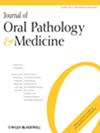Oral Mucosal Alterations: Prevalence and Associated Factors Among 31-Year-Old Adults From a Brazilian Birth Cohort
Abstract
Background
Population-based studies on the prevalence of oral mucosal alterations and sociodemographic and behavioral predictors are scarce. The aim of this study was to assess the prevalence of oral mucosal alterations and associated factors in 31-year-old individuals from a Brazilian birth cohort.
Methods
Adults from the oral health substudy were included. At the age of 31, information was collected on oral mucosal alterations, including clinical diagnosis, site, size, and self-reported onset time through a clinical examination. After descriptive analyses, associations between independent variables and the presence of potentially malignant oral disorders, developmental alterations, and parulis were tested. Poisson regression models were used to estimate the prevalence ratio of oral mucosal alterations according to sociodemographic, behavioral, and oral health-related variables.
Results
Oral mucosal alterations had an identified prevalence of 33.5% (n = 535). The five most prevalent clinical diagnoses were exostosis (18.6%), coated tongue (12.4%), parulis (10.2%), benign oral brownish pigmentation (10.2%), and fissured tongue (9.7%). The tongue was the most common site (29.7%), followed by vestibule or gums (24.3%). In the multivariate analysis, individuals who consumed alcohol frequently had a two-fold increase in oral mucosal alterations prevalence compared to non-users (PR = 2.03; 95% CI = 1.17–3.52). Low schooling and tobacco and alcohol consumption were associated with a higher prevalence of oral potentially malignant disorders and parulis (p value ≤ 0.05).
Conclusions
There was a high prevalence (33.5%) of oral mucosal alterations, mainly developmental. Prevalence was associated with socioeconomic, behavioral, and oral health-related variables, highlighting the need for comprehensive and multidisciplinary approaches to risk factors to prevent oral diseases.

 求助内容:
求助内容: 应助结果提醒方式:
应助结果提醒方式:


